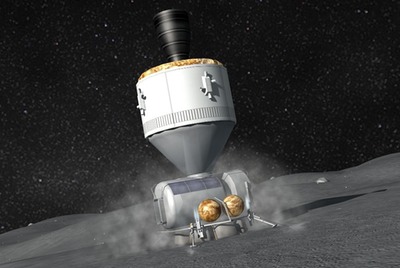Merging human spaceflight and science at NASAby Lou Friedman
|
| Instead of human spaceflight swallowing science, I’d like to see the reverse: science swallowing human spaceflight by focusing it on exploration. |
That last sentence captures the huge dichotomy which is NASA. From its very beginning to the present day, NASA provides important, exciting, and popular new discoveries that increase understanding of our place in the cosmos. As such, it remains a symbol of can-do for America and inspiration for the world. Best of all, NASA substantially increases the body of knowledge so important to educating the public, especially schoolchildren, about our planet and our universe.
Unfortunately, there is another side to NASA’s story—the human spaceflight program stuck in Earth orbit, mired in politics, and drifting from proposal to proposal, never alighting on one long enough to have a clear purpose. It doesn’t have to be this way. For years, I, along with others, have been calling for more integration of science and exploration. With some justification, many science advocates fear such a melding, worrying that integration would mean their projects would be eaten up by the larger human spaceflight program.
That is a legitimate concern if human spaceflight remains without a science or exploration goal. Instead of human spaceflight swallowing science, I’d like to see the reverse: science swallowing human spaceflight by focusing it on exploration. Make exploration more than the name of a program office.
The bollixing up of NASA’s program planning by last year’s Congress and the emphasis on budget cuts by this year’s Congress create a severe challenge for the future of human spaceflight. But that challenge also creates an opportunity. Perhaps now is the time to return to that post-Columbia accident debate about the purpose of human spaceflight, to examine what is worth the high cost and high risk of humans in space. I have no doubt that the answer will remain what it has always been when those debates were held: the exploration of other worlds.
Much has been written about shrinking NASA’s Apollo legacy infrastructure. That has proved politically impossible as members protect local interests of NASA centers and industry. But there is a shift now, propelled by reduced spending and pressures for reduced government. One possible result is putting a lid on NASA spending and then pushing the lid down to make everything smaller. That would be too bad: goals, missions, accomplishments, and NASA’s very purpose would all diminish.
| It’s my view that NASA is in crisis. But despite that crisis, the agency is strong right now: performing missions brilliantly and advancing science and technology. The time to deal with crisis is when you are strong. |
Instead, perhaps we can think about what the public cares about from the space program: scientific discovery, new achievements, and inspiration. Perhaps we can examine what policy makers really want from our space program when they use that vaunted phrase, “American leadership.” Doing the same things on a reduced budget doesn’t sound like American leadership. Leading other nations in exploration of the universe—and in understanding our own planet and place in the cosmos—does.
If we merge human exploration into science, then admittedly we will reduce some near-term human space program expenses. But that is going to happen anyway. NASA is already being pushed to get out of transportation and focus on exploration. We can build a stronger and more purposeful human program by involving human spaceflight in the programs that are making exciting discoveries about other worlds and our own.
This huge step involves some huge shifts. The biggest shift is the first one: that of the paradigm. Merging human spaceflight mission development into science planning would create enormous program, institutional, and infrastructure upheavals. We have to start from the top, defining our goals and objectives.
The observation, monitoring, and understanding of Earth as a planet is one goal. Another is learning more about near-Earth objects, including the discovery, characterization, and use of NEOs, as well as protecting Earth from them. The exploration and possible settlement of Mars is an obvious third goal, while the fourth is the one that Mr. Bolden mentioned, understanding our place in the cosmos. My successor at The Planetary Society, Bill Nye, sums it up by saying we must “know our place in space.”
Those goals all have homes in the Science Mission Directorate. Would we dare put the human mission planning in those homes? Many scientists pooh-pooh human spaceflight, and their response might be to cancel it. But most of the scientists involved in space exploration understand that humans are part of that exploration.
Despite the joys of finding extrasolar planets, exploring new canyons and plains on Mars, seeing the edge of the Universe, and learning about our near-Earth environment, it’s my view that NASA is in crisis. Its public image is fuzzy and uncertain, and all the political pressures are negative. But despite that crisis, the agency is strong right now: performing missions brilliantly and advancing science and technology. The time to deal with crisis is when you are strong. Now is the time for some new thinking where human spaceflight fits in NASA’s future.
